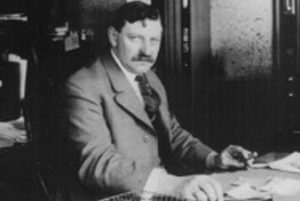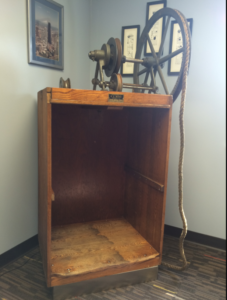Resource
Manual vs. Automatic Dumbwaiters: A Brief History
May 5, 2021In 1887, a New York inventor named George W. Cannon filed a patent for a new machine: the dumbwaiter.
 A year later, a master carpenter on the north side of Chicago, Duffy Matot, founded Matot. Duffy’s vision was simple; he wanted to provide businesses throughout the area with functional, high-quality dumbwaiters.
A year later, a master carpenter on the north side of Chicago, Duffy Matot, founded Matot. Duffy’s vision was simple; he wanted to provide businesses throughout the area with functional, high-quality dumbwaiters.
During Matot’s early years of manufacturing, manually operated dumbwaiters were the only option available on the market.
Today, the vast majority of dumbwaiters are electric (automatic) and, as a result, much more efficient.
Although manual dumbwaiter usage has decreased significantly over the years, installations still occur, particularly for residential purposes.
Let’s explore the shortcomings of manual dumbwaiters and why automatic systems are almost always the preferred choice.
The Drawbacks of Manual Dumbwaiter Systems
 A manual dumbwaiter’s car is counterbalanced by adjustable iron weights during operation. When contents are added, the extra weight is offset by either a locking mechanism/brake or the friction of the pulleys.
A manual dumbwaiter’s car is counterbalanced by adjustable iron weights during operation. When contents are added, the extra weight is offset by either a locking mechanism/brake or the friction of the pulleys.
While these manual systems succeed in moving items between floors, they have their fair share of shortcomings.
With manual dumbwaiters, constant supervision and labor are needed to ensure the system is operating correctly. This reliance on manual labor results in limitations in both speed and weight capacity, making manual dumbwaiters ill-suited for applications where regular use is needed.
The Modern Standards of Today’s Dumbwaiters
Today, automatic dumbwaiters are almost always the recommended choice. Modern dumbwaiters, like the ones made at Matot, require just a push of a button to operate.
Unlike their manual counterparts, automatic dumbwaiters are a reliable solution that can be used in any industry.
These systems consist of a moveable car powered by a machine that moves it within a set of guide rails inside a dedicated shaft in the building.
A reliable and cost-effective alternative to manual methods, today’s dumbwaiters move materials automatically without dependence on operating personnel.
Plus, automatic dumbwaiters can be custom-built to suit a wide range of weight capacities and needs.
With these features in mind, it’s no wonder that modern dumbwaiters are one of the safest (and most efficient) ways to transport materials between floor levels.
Let Matot Be Your Guide to the Convenience of Modern Dumbwaiters
For more than 130 years, Matot has offered the best commercial dumbwaiters and vertical lift solutions possible. Our rich history is shown in the quality and longevity of our work, meaning our dumbwaiters can last longer than a lifetime.
Whether it’s a brand new dumbwaiter installation or replacing old controllers, hoistway entrances, or power door equipment—our work is guaranteed to leave your systems operating more efficiently than before.
Contact us to learn more about our safe, high-quality automatic dumbwaiters.
Back To BlogDownload Masterspecs
Matot’s master specifications are for use for all products.
Browse MasterspecificationsDesign & Planning Services
Our Planning Center has everything from basic information to final drawings.
Get Started With Matot